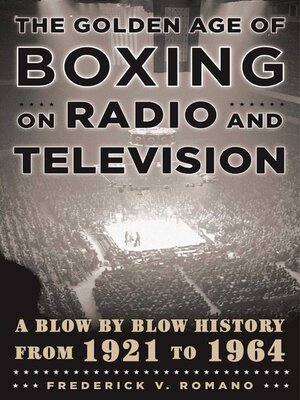The Golden Age of Boxing on Radio and Television: a Blow-by-Blow History from 1921 to 1964
ebook
By Frederick V. Romano

Sign up to save your library
With an OverDrive account, you can save your favorite libraries for at-a-glance information about availability. Find out more about OverDrive accounts.
Find this title in Libby, the library reading app by OverDrive.



Search for a digital library with this title
Title found at these libraries:
| Library Name | Distance |
|---|---|
| Loading... |
Radio and television broadcasting were as important to the growth and popularity of boxing as it was to the reshaping of our very culture. In The Golden Age of Boxing on Radio and Television, Frederick V. Romano explores the many roles that each medium played in both the development and the depiction of the sport. Principal among the topics covered are the ever-changing role of technology during the four-decade-plus period, how it impacted the manner in which the sport was presented to its public audience, the exponential growth of those audiences, and the influence radio and television had on the financial aspects of the sport, including the selective use of radio and television and the financial boom that the mediums created.
The Golden Age of Boxing on Radio and Television also assays radio and boxing during World War II, the role of organized crime, and the monopolistic practices during the television era. Romano also presents a detailed account of announcers such as Don Dunphy and Ted Husing who brought the action to the listeners and viewers, the many appearances that boxers including Jack Dempsey, Joe Louis, and Rocky Marciano made on radio and television when they were not in the ring, and the mediums' portrayal of the sport in an array of programming from drama to comedy. This is a must-have for all serious boxing fans.
The Golden Age of Boxing on Radio and Television also assays radio and boxing during World War II, the role of organized crime, and the monopolistic practices during the television era. Romano also presents a detailed account of announcers such as Don Dunphy and Ted Husing who brought the action to the listeners and viewers, the many appearances that boxers including Jack Dempsey, Joe Louis, and Rocky Marciano made on radio and television when they were not in the ring, and the mediums' portrayal of the sport in an array of programming from drama to comedy. This is a must-have for all serious boxing fans.







